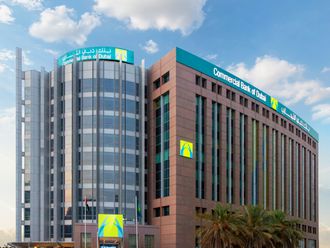Dubai: Profitability of the UAE’s banking sector will continue to remain stable as margin pressures are moderated by asset-quality improvements, recoveries and asset growth, according to credit rating agency Moody’s.
“Over the next 12-18 month outlook period, we expect continued robust public spending particular in Abu Dhabi and strong growth in Dubai’s more diversified private sector to support real GDP growth of over 4 per cent annually in both 2014 and 2015. This growth combined with increased confidence will support credit growth of 7 per cent to 10 per cent annually for the banking system” said Nitish Bhojnagarwala, a Moody’s Assistant Vice President.
On funding side, over the outlook horizon, analysts expect strong deposit growth in the UAE to increase the contribution of customer deposits to around 65 per cent to 70 per cent of total assets. Despite significant contractual maturity mismatches, historically, most of these deposits have been stable during past crises.
The rating agency expects net earnings to remain strong over the outlook period. Both Dubai and Abu Dhabi-based banks will continue to benefit from lower loan-loss provisions because of declining bad loans; higher problem loan recoveries and settlements because of improved property prices; and modest asset growth.
Moody’s analysts see continued easing of problem loans to drive lower loan-loss provisioning, which when coupled with asset growth will support a modest increase of returns on assets to around 2 per cent over the outlook period.
“This performance will help to offset some of the weaknesses in top line profitability, which continues to be affected by margin pressures, given the low interest rate environment and an increasingly competitive business environment,” said Khalid Howladar, a Moody’s Vice President — Senior Credit Officer.
Analysts said that the increase in profitability will boost internal capital generation, maintaining banks’ strong Tier 1 capital levels at around 16 per cent over the outlook period (stable at these levels since 2012).
“We also expect UAE banks’ capital buffers to remain resilient, as the system’s aggregate Tier 1 ratio would decline to a still solid 10 per cent under our low probability adverse scenario, which assumes a protracted global recession leading to weak global demand and trade flows, coupled with a sustained drop in oil prices,” said Howladar.
In addition to the strong shock absorption capacity provided by these robust capital metrics, the cash-rich federal government and stronger Abu Dhabi-based government related entities are expected to continue to remain a key and stable source of deposits, limiting the system’s dependence on confidence-sensitive market funding.
According to Moody’s, the strength of the UAE banks’ liquidity is reflected in the banking system’s liquid assets-to-total assets ratio of around 30 per cent as well as a loans-to-deposit ratio of 91 per cent as of December 2013.










